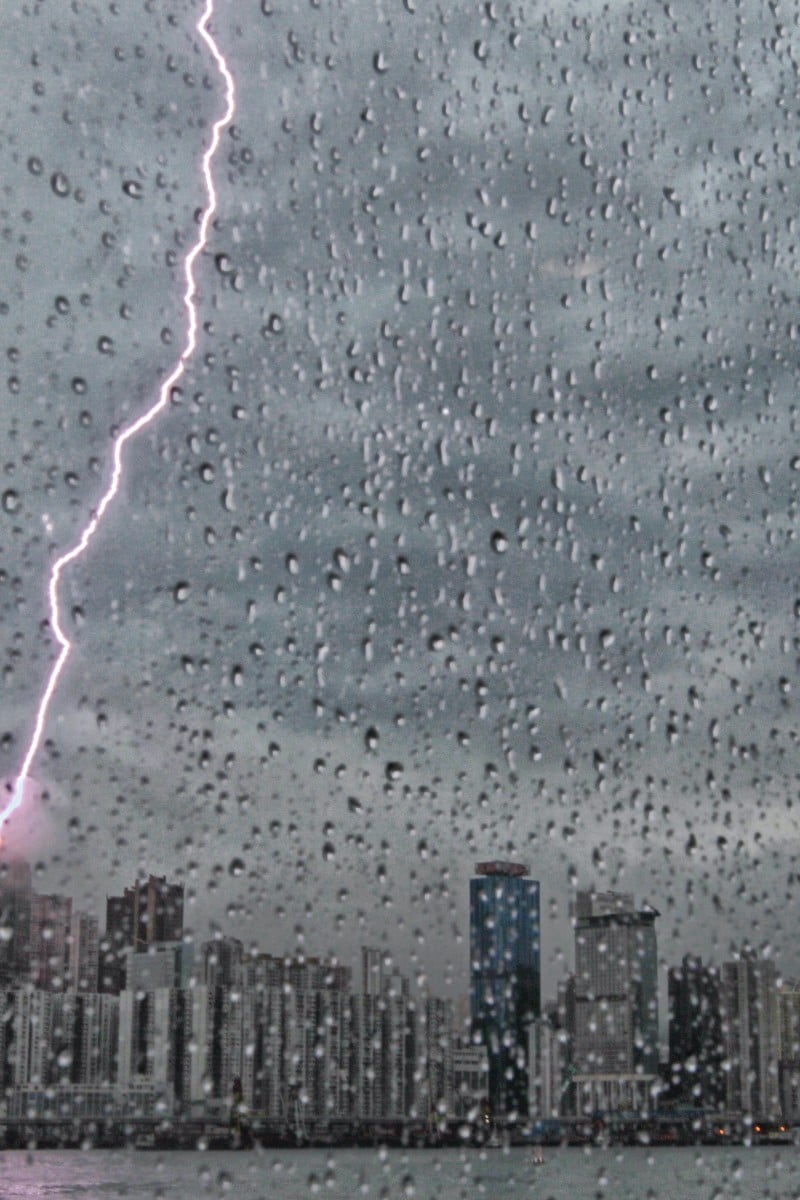
There's more to them than being a perfect setting for night spent watching horror movies, or ruining your outdoor plans.
 There's a lot going on behind the thunder and the flash.
There's a lot going on behind the thunder and the flash.When you think of thunderstorms, you probably only think of wet clothes and dark gloomy skies (and in Hong Kong, the vague possibility of a black rainstorm warning), but the weather phenomenon surrounding these storms is actually really fascinating.
Here are seven things you might not know about thunderstorms:
1. Thunderstorms are gigantic
Thunderstorms are produced in cumulonimbus clouds, which are some of the largest clouds in the atmosphere. The base of these clouds is usually between 300m metres and 1km above the ground, but they can grow to a height of 10 to 20 kilometres!
You can spot these clouds by their sheer size, towering column shape, and their anvil-shaped top.
2. Thunderstorms are as powerful as atomic bombs
Cumulonimbus clouds can pack in a much energy as 10 Hiroshima-sized atomic bombs. They get this energy from the movement and circulation of warm air, known as convection. In this process, warm and humid air rises from the ground into the upper atmosphere, where it cools, condenses and falls to form the cloud. This process continues as more humid air rises and cools, creating a cycle that causes the cloud to grow in size.
3. Thunderstorms are frequent and fast
Thunderstorms form quickly, and they can take as little as one hour to form. They are also very common in places where the air is hot and humid - it is estimated that on average, lightning strikes the Earth 44 times every second.
4. You can measure how far away a thunderstorm is using just a stopwatch
Although meteorologists uses lots of advanced technology to monitor and track storms, you can easily figure out how far a thunderstorm is yourself using a stopwatch and some simple maths.
As soon as you see flash of lightning, start a stopwatch and measure the time it takes until you hear the thunder. Then take the number of seconds you timed between the lightning and thunder, and divide that by three, giving the distance of the storm is from you in kilometres.
5. Lightning is caused by static electricity
Cumulonimbus clouds are very violent places, with water droplets and ice particles moving around the cloud quickly and rubbing against each other. The collisions between the particles creatic static electricity, creating a positive charge at the top of the cloud, while the bottom is negatively charge. When the difference between the top and bottom is large enough, the static electricity discharges, creating lightning.
6. Lightning strikes are small, but powerful
The average lighting strike is only 2-3cm wide, but can pack anywhere between one and 10 million joules of energy. To put that into perspective, four million joules is enough to power the average home fridge for a whole year.
A lightning bolt travels at around 430,000 kilometres per hour through the air, and reaches temperatures of 30,000 degrees Celsius. This is around three times hotter than the surface of the sun. These high temperatures cause the air around the lighting to expand rapidly, creating the loud boom we know as thunder.
7. Big cities can actually create stronger thunderstorms
Research has found the extra heat generated around cities can make thunderstorms more intense. This is thanks to the phenomenon known as the urban heat island effect. Heat from activities such as driving cars, and the vast amount of heat-absorbing concrete in cities means that the air there is warmer. This extra heat means more hot and humid air rises to form clouds and thunderstorms.
One study in the United States found that rainfall in Phoenix, in the state of Arizona, increased by 12 to 14 per cent as the city grew larger.